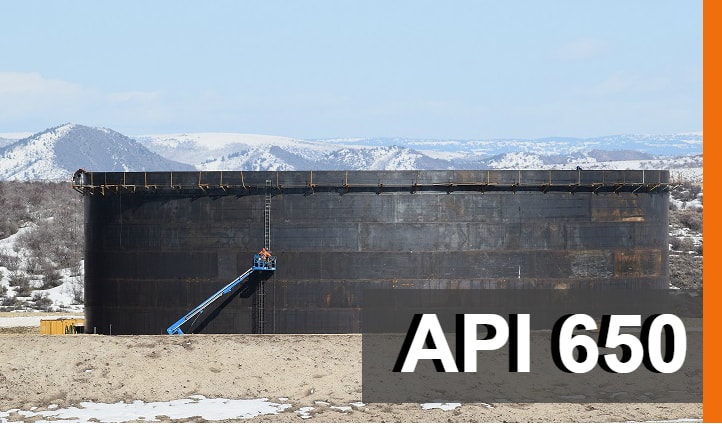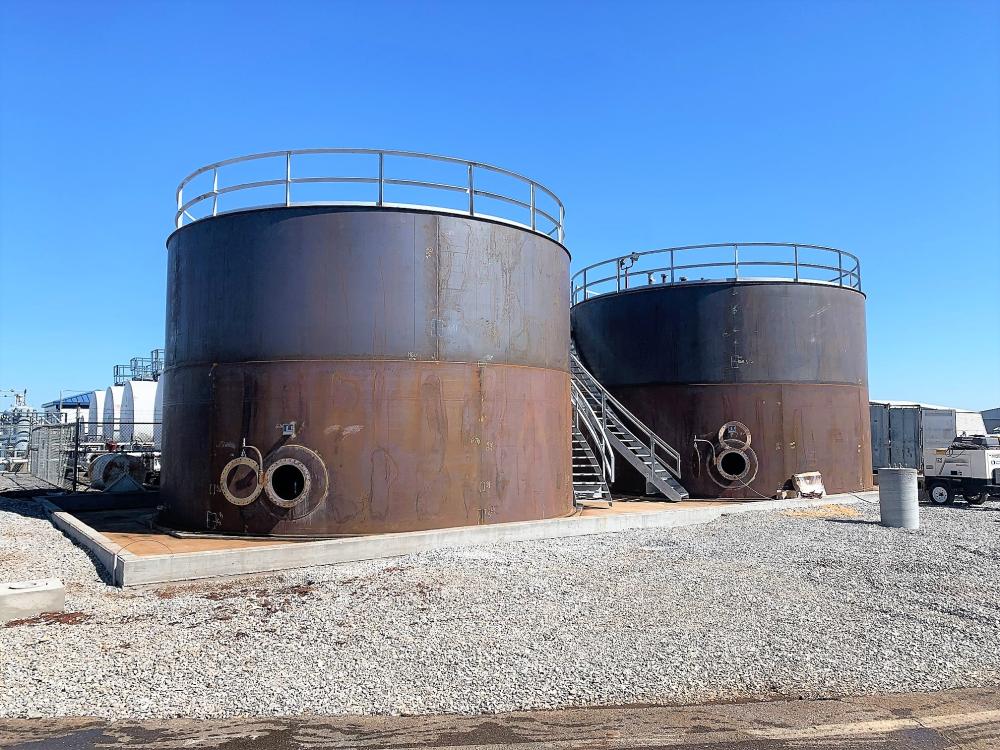Updated Techniques Used in API 650 Welding Inspection for Consistent Performance
Wiki Article
Comprehending the Significance of Welding Assessment in Quality Control Processes
Welding assessment is a necessary component of quality control in building and construction and manufacturing. It ensures that welds abide with recognized standards, which is crucial for structural honesty. Various examination methods, from aesthetic to ultrasonic testing, help recognize flaws early. This positive approach not only stops pricey repairs yet also enhances safety. Comprehending the subtleties of welding evaluation can disclose its wider ramifications for market compliance and credibility. API 650 Welding Inspection. What lies below the surface of these practices?The Duty of Welding Evaluation in High Quality Guarantee
While welding is an essential procedure in various markets, its top quality and stability pivot significantly on effective inspection techniques. Welding assessment acts as a protect, ensuring that welds satisfy well-known standards and requirements. This procedure not only recognizes problems but also evaluates the general craftsmanship, therefore adding to the security and longevity of welded structures. Assessments are integral to quality control, as they aid avoid expensive failures and preserve compliance with sector laws. By using skilled inspectors, organizations can boost their functional performance and copyright their credibilities. Furthermore, the understandings gained from evaluations can notify continual enhancement, leading to better methods and training for welders. Eventually, welding examination functions as a crucial link in the top quality assurance chain, making sure that every joint is capable and reliable of enduring the rigors of its desired application. This persistance is necessary for the integrity of infrastructure and the safety of end individuals.Sorts Of Welding Inspections
Welding inspections encompass an array of methods made to examine the top quality and integrity of welds. These inspections are necessary in guaranteeing conformity with market standards and specs. Usual kinds of welding examinations consist of aesthetic inspection, which permits immediate identification of surface area irregularities; ultrasonic testing, which utilizes high-frequency acoustic waves to detect internal defects; and radiographic screening, employing X-rays or gamma rays to disclose weld stability below the surface area (API 650 Welding Inspection). Furthermore, magnetic fragment testing is utilized to recognize surface area and near-surface interruptions in ferromagnetic products, while dye penetrant screening offers a technique for revealing surface-breaking defects. Each kind of inspection offers a particular objective, adding to the total quality control process. By employing a combination of these techniques, examiners can give a comprehensive evaluation of welding high quality, eventually making sure the safety and dependability of welded structuresCommon Issues Found in Welding
A variety of typical flaws can take place during the welding procedure, influencing the honesty and efficiency of welded structures. These problems consist of porosity, which includes trapped gas pockets within the weld, weakening its strength. Fractures may also develop due to fast air conditioning or inappropriate joint style, leading to potential failure under anxiety. Incomplete blend occurs when there is insufficient melting of the base steel, resulting in weak bonds. An additional problem, damaging, entails the elimination of base steel along the weld side, developing a substantial architectural weak point. In addition, too much spatter can affect the look and demand further cleansing or repair. Imbalance can lead to irregular weld grains, compromising the general quality. Identifying these flaws early with proper evaluation strategies is necessary to guarantee the dependability and safety and security of bonded components, ultimately safeguarding the performance of the whole framework.
Benefits of Regular Welding Examinations
Normal assessments play a considerable duty in keeping the high quality and safety of bonded structures, particularly taking into account the common defects formerly detailed. These examinations give an opportunity to determine and remedy problems prior to they escalate into major problems, making sure structural integrity. By finding imperfections early, companies can minimize fixing costs and stay clear of possible task hold-ups.In addition, regular welding evaluations enhance compliance with sector requirements and policies, fostering count on among stakeholders. This adherence not just secures the firm's track record however also adds to boosted security for employees and the general public.
Regular examinations help with better training and skill advancement for welders, as responses from assessments can guide improvements. Ultimately, the advantages of regular welding inspections extend past immediate quality control, promoting long-term functional efficiency and reliability in bonded frameworks.
Finest Practices for Effective Welding Inspection
Implementing ideal techniques in welding examination is necessary for guaranteeing the highest requirements of quality and safety. Initially, assessors have to be effectively trained and licensed, having a thorough understanding of welding techniques and materials. Using advanced evaluation innovations, such as ultrasonic screening and radiography, enhances the discovery of issues that might not be noticeable to the naked eye. Developing a clear evaluation strategy, describing the requirements and regularity of assessments, assurances consistency and thoroughness.

Recording all findings thoroughly is vital for traceability and accountability. Normal calibration of evaluation equipment ensures precision, while maintaining a clean and well organized work space decreases the risk of contamination. Furthermore, promoting open communication amongst team participants promotes the sharing of understandings and advertises a society of top like this quality. By adhering to these best techniques, companies can significantly improve their welding quality control processes, ultimately causing more secure and extra dependable items.

Regularly Asked Inquiries
What Certifications Are Needed for a Welding Inspector?
A welding examiner typically requires qualification from identified companies, such as the American Welding Society (AWS) or the International Institute of Welding (IIW), along with pertinent experience and knowledge in welding processes and top quality criteria.Just How Frequently Should Welding Inspections Be Executed?
Welding examinations need to be done on a regular basis, usually at various project stages, including prior to, during, and after welding processes - API 650 Welding Inspection. The regularity frequently depends on job specifications, regulatory requirements, and the intricacy of the welds involved
What Are the Costs Related To Welding Examinations?
The expenses related to welding assessments differ commonly, Go Here generally varying from a couple of hundred to numerous thousand dollars, relying on variables like inspection kind, job size, and area, influencing overall job budget plans and timelines.Can Welding Inspections Be Performed From Another Location?
Yes, welding examinations can be performed from another location making use of innovative technologies such as drones, cameras, and ultrasonic screening. These methods enable examiners to assess weld integrity without being physically existing, improving performance and security in different environments.Exactly How Do Examination Results Influence Project Timelines?
Evaluation results can significantly influence job timelines by determining issues early, bring about essential rework or changes. Delays might happen if examinations reveal problems needing resolution, ultimately influencing overall project conclusion and budget plan adherence.Welding examinations include an array of methods developed to review the high quality and honesty of welds. Usual types of welding examinations include aesthetic inspection, which see this page enables for immediate identification of surface irregularities; ultrasonic screening, which utilizes high-frequency audio waves to spot interior problems; and radiographic screening, utilizing X-rays or gamma rays to disclose weld honesty underneath the surface area. Regular examinations facilitate better training and ability growth for welders, as comments from inspections can guide renovations. Executing finest techniques in welding assessment is vital for ensuring the greatest standards of quality and safety and security. Welding inspections need to be executed routinely, usually at different project phases, including prior to, throughout, and after welding procedures.
Report this wiki page